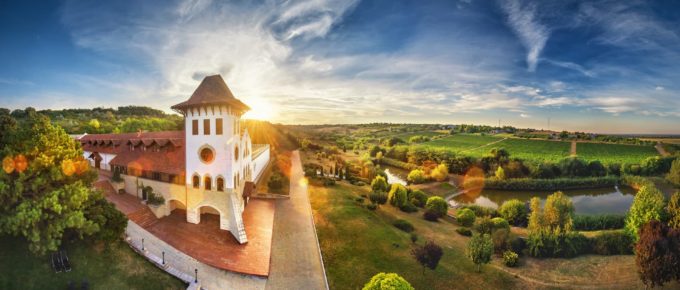Wine is also the main driver of local and international tourism to Moldova, during past years and resulting from over 70% growth of wine tourists, the number of wineries opened for visitors has tripled. The Republic of Moldova is ranked #1 in the world by vineyard surface ratio per capita and in total agricultural land. Wine also plays a significant role in national life, bringing almost 5% of the GDP with 15% of the active population involved in professional wine production mostly in rural areas.
Furthermore, Moldova is proud to announce the launch of three new Wine Routes as the perfect gateway to exploring this off the beaten path destination. The Wine Routes of Moldova have successfully become a part of the ITER VITIS ROUTE, the European Cultural Route of the Vine and Wine. The National Inbound Tourism Association of Moldova (ANTRIM) is proud to represent Moldova in this venture and to develop authentic wine experiences and wine tourism itineraries.
The Wine Routes of Moldova made up of three regions with protected geographical indication. The central Codru PGI wine route, which feature outstanding whites, reds, and sparkling wine, as well includes the largest number of wineries. The Trajan’s Wall PGI Wine Route extends from Chişinău to the south-west and it is known for its red varieties and passes through Moldova’s autonomous Gagauzia territory with Turkish ties and diverse gastronomy. The Stefan the Great PGI Wine Route, which reaches from the capital to the south-east. The landscape is less mountainous than neighboring Romania, with hills close to the capital Chisinau, rising to 305 meters. Soil vary, but fertile black soil is widespread. French grapes such as Pinot Blanc, Pinot Noir, Pinot Gris, Aligoté, Cabernet Sauvignon, Sauvignon Blanc and Muscat Blanc and French winemaking methods were introduced by the Czars in the late 19th century, alongside the indigenous Rara Neagra, Plavai, Feteasca Alba, Feteasca Neagra, Feteasca Regala, Rara Neagra – as well as other Greek, Turkish and Hungarian varieties. Rkatsiteli and Saperavi were introduced by the Soviet system. Some 73 % of the grapes grown in Moldova are international varieties, 17 % are Caucasian, and 10 % percent are strictly local.
The wine diversity permits you to choose your suitable winery. Here, you can choose among the home of the largest wine cellar “Cricova” and the largest wine collection in the world – “Milestii Mici”. Moreover, more choices for visit are guaranteed as the oldest winery in the country - Purcari or one of the Top 15 Architectural Masterpieces of the Wine World - “Castle MIMI”. If you are looking for the traditional Moldovan vibe mixed with modern techniques, then Asconi Winery is the right fit for you. Last and not the least, the small wine producers will fascinate you through its quality and diversity, starting with Carpe Diem, Gogu Winery, Vinaria Nobila and ATU, which has opened the first urban winery in town covered with graffiti. At all this wineries you can taste the most distinguished Moldovan traditional dishes include “Mamaliga”, which is polenta served with sour cream and cottage cheese; “Zeama” a homemade soup made with chicken, vegetables, and home-made noodles and “Sarmale”, rolls of cabbage (or vine) leaves stuffed with rice, vegetables, and minced meat.
Moldovans have a rich culture in customs and traditions. Moldovan traditional culture is widely celebrated in music, dance, art and living culture. Its cultural holidays are becoming year by year more popular and attract a great number of tourists like the National Wine Day that is happing annually on the first weekend of October.


